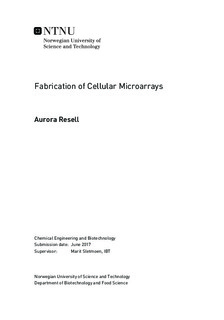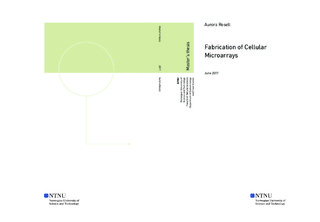| dc.description.abstract | Cellular microarrays are known for their use as a tool to investigate variations between single cells in terms of how they respond to different physiological parameters. The work of this thesis focused on developing a procedure for fabricating such cellular microarrays, which was mainly done by investigating the effects of the experimental parameters in the photolithography step.
Factors such as homogeneity of the photoresist layer and exposure doses of UV-light proved to be crucial for the final result of the microarrays.
The photoresist used during photolithography, SU8, brought several challenges as the resist layer was inhomogeneous and often cracked.
The inhomogeneities in the resist layer resulted in PDMS stamps with non-optimal features, causing difficulties during microcontact printing.
Fluorescently labeled PLL and quantum dots were used for investigating whether or not the PDMS stamps made were suited for microcontact printing. Yeast cells were attempted immobilized onto glass surfaces microcontact printed with PLL. The PLL attached poorly to the glass surfaces when cells were added. | |

